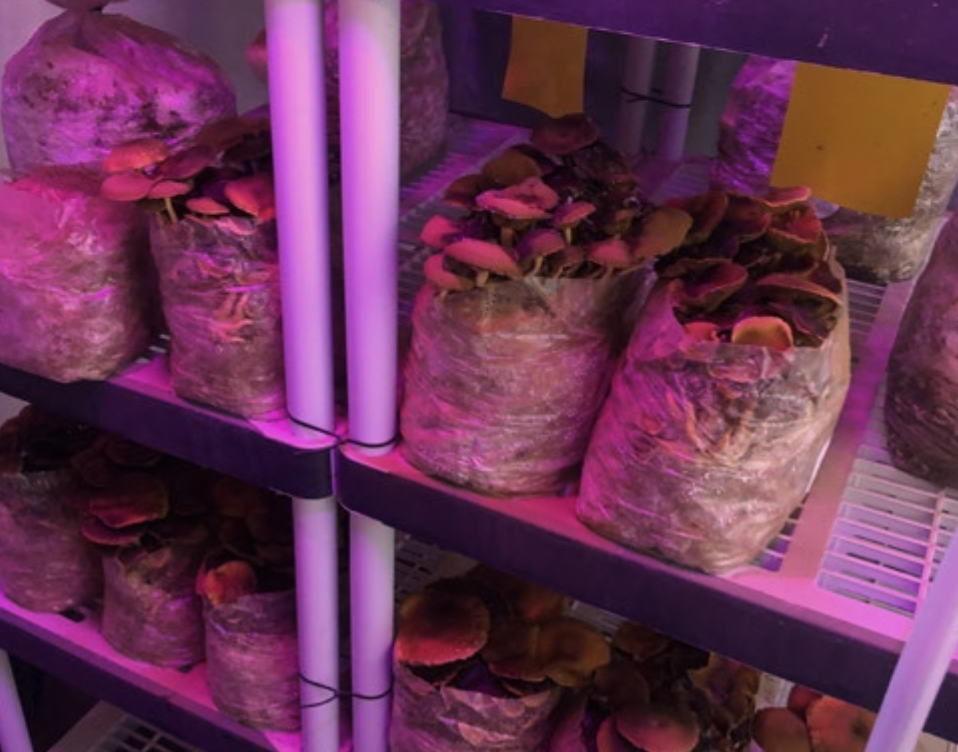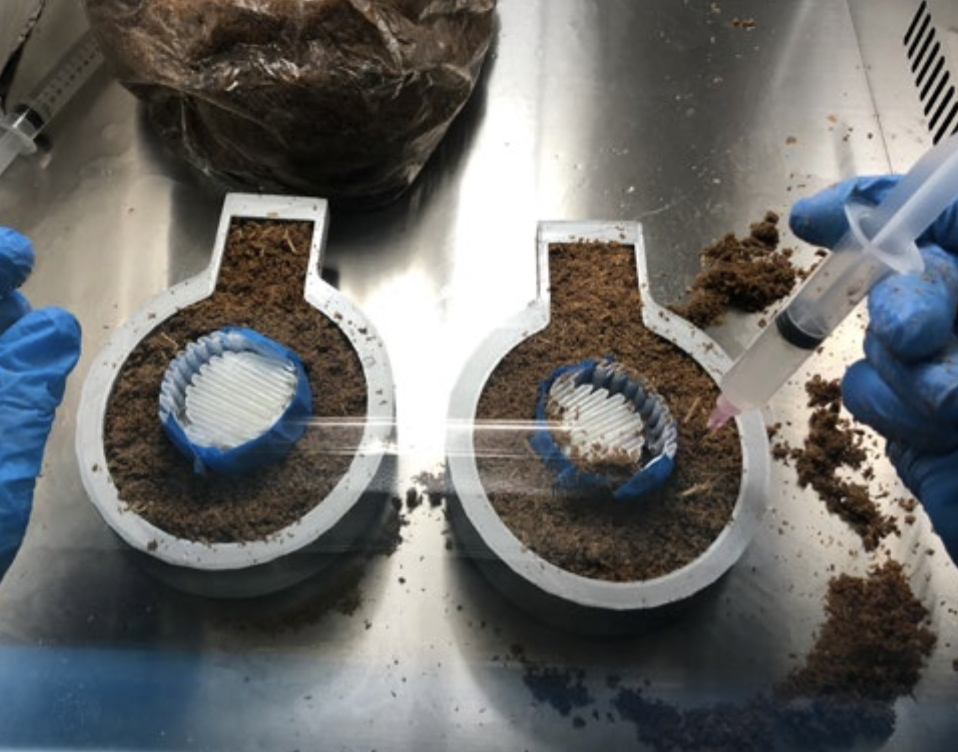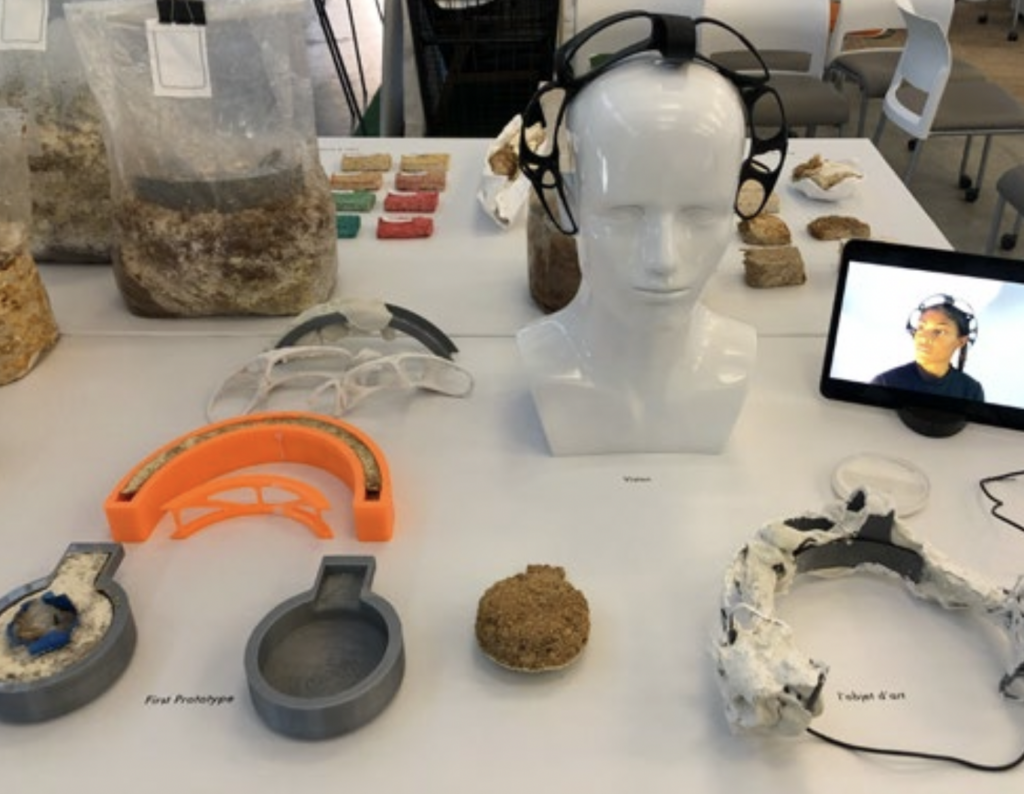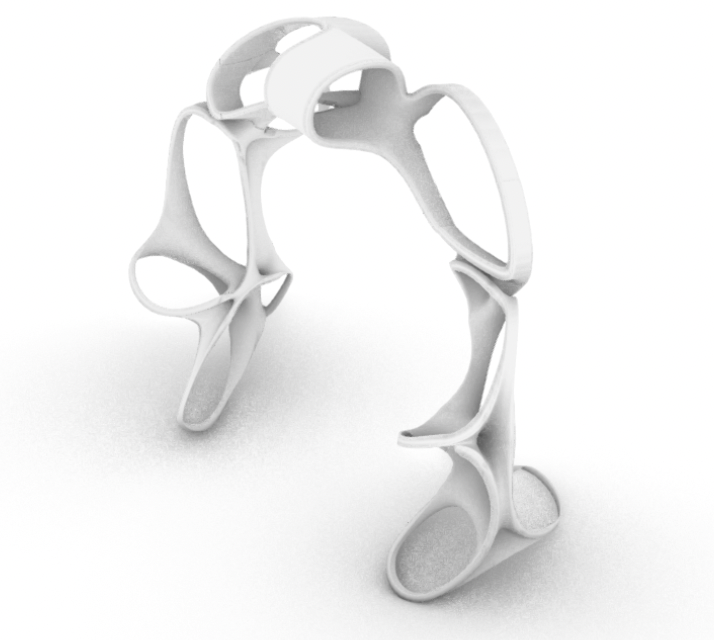Jan-Simon Veicht (Jan)
MDes Fall 2022
Design for preferable consumption
Introduction
Our systems of mass production live on the edge of their capacity. We simultaneously recycle and destroy through our con- tinuous cycle of consumption and waste. Thus, what if the products of our daily lives were being created in dialogue within the cycles of nature rather than against it? Audiomycelia uses mycelium – the root-like network structure used in fungus – as its primary matter. Leveraging this medium’s shock absorbent, lightweight, and noise-canceling properties, the project utilizes a “dialogue with nature” through the nurturing of organic material.
As Audiomycelia seeks to redefine the public’s aesthetic definition, it is necessary to note the range of color, material, and finish in mycelia. This topic has been typically unexplored. The project aims to comprehend the range of options and possibilities in terms of the aesthetic finishing choices in design by experimenting with various substrate blends and potential coloring processes, such as Mica powder, vegetable dyes, and food coloring.
Using discarded sawdust from the Jacobs Institute workshop and cardboard litter as the base for the mycelium to grow on, this material then acts as inspiration for the innovation of a functional, bespoken digital artifact: audio headphones.
Process
 Mycelium breaks down and absorbs surrounding organic matter into nutrients that can be absorbed and used as nourishment. They make up a critical part of our planet’s ecological ecosystem throughout nearly all climatic zones by aiding decomposition and regeneration processes.
Mycelium breaks down and absorbs surrounding organic matter into nutrients that can be absorbed and used as nourishment. They make up a critical part of our planet’s ecological ecosystem throughout nearly all climatic zones by aiding decomposition and regeneration processes.
The design process began by analyzing the waste culture of Jacobs Hall, a 24,000-square-foot building on the UC Berkeley campus that houses the Berkeley MDes program. It was inspired by the amount of sawdust and cardboard that was generated daily. Focussing on the abundance of both materials, it kick-started different kinds of material experiments. Initial iterations included various stages of blending and mixing both resources.
To simulate a production-oriented environment, the next iteration in the growth processes was to find a facility that could provide the high CO2 microclimate chamber referenced above. The overall approach was primarily research-driven, using designedly methods such as rapid prototyping and material experimentation as the main driver for iteration and adaption of the design. Understanding the material was an essential part of the project’s vision in letting the growth process become the design process itself. The actual device design was approached in the form of creating visual archetypes of a pair of headphones.
Final Design
 The final design is envisioned as the third stage in prototyping, showing lab-grown, mycelium-based headphones following a minimalistic designed iteration of a skeleton structure mold approach. Ultimately, this design has the look and feel of a design artifact, situated next to various material tests and explorations, and will be shown in line with the first two prototypes made from actual mycelium material over eight weeks.
The final design is envisioned as the third stage in prototyping, showing lab-grown, mycelium-based headphones following a minimalistic designed iteration of a skeleton structure mold approach. Ultimately, this design has the look and feel of a design artifact, situated next to various material tests and explorations, and will be shown in line with the first two prototypes made from actual mycelium material over eight weeks.
Made from 3D printed PLA and silicon, the final stage will visualize the idea of an individualized, bespoke headphone design. All prototyped concepts have in common that mycelium serves as a structural enclosure for the electronics, encapsulated in a 3D printed PLA casing. Given the modularity of all designs, it is a first design attempt in thinking about a potential small scale production of the final product and how the needed electronics could be easily implemented as well as removed once the headphones reach their (likely) end of life, where the mycelium-grown part can be discarded and biodegrade within 30 days.
What would happen if the products of our daily lives were created, not in stubborn opposition to nature, but crafted in an alert dialog with nature? How might our lives be different? What new aesthetics might emerge? What if we would aspire to such naturally grown products as much as a beautifully milled block of aluminum?

Full listing
